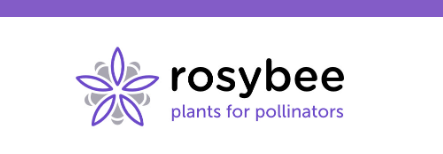‘Forage’ – a talk by Lynne Ingram NDB
Kilmington Village Hall, 13/10/22. 25 participants.
What is Forage?
The simple definition would be ‘It is a food source’. More specifically, forage for bees consists of carbohydrate rich nectar providing energy, and protein rich pollen providing food for body growth and repair.
How much does a colony need?
50-60,000 bees can consume 1800 calories per day which equates to some 300-500 lb nectar per year just to rear the workforce. In addition, the honey needed to make wax (c8lb per lb of wax) will add another 22lb of honey required per brood box. Then there are the winter stores of 40lb honey. If there is any honey left, this is the surplus for the beekeeper.
What do the bees use forage for?
The energy component fuels the metabolism of the adult bees, which includes heat production, energy for flight and wax making, plus manufacture of brood food. This larval nutrition is especially important in caste determination (queen or worker) and viral resistance. Experiments have shown that bees, especially drones, deprived of sufficient nutrition in the larval stages of growth will be less able to perform their normal functions and will be more prone to viral infections.
The pollen component provides proteins, fats, vitamins and minerals. Lynne quoted the average protein content of fresh pollen as 22.7%, but with a range of 2.5% to 62%!
Nectar
Nectar consists of carbohydrates (mainly glucose, fructose and sucrose), water, amino acids and trace elements. A nectar flow, either natural or as a result of feeding, will stimulate bees in a variety of ways.
- Queens will lay more eggs
- Young workers rear brood
- Other young workers make wax and build comb
- Older workers forage for pollen
There is also a feedback mechanism whereby returning foragers receive brood food, the quality of which determines what they forage on next.
Pollinators and Plants – a Win : Win Relationship
Bees need Plants – bees only collect four products: pollen, nectar, propolis and water. These are all derived from plants, except water.
Plants need Bees – cross pollination aided by bees and other insects is more efficient than wind pollination. Plants have evolved many mechanisms to help bees find the nectar and pollen rewards for their pollination services.
Foraging Strategies
Bees are generalists in that they will feed on a wide variety of plants, which ever gives the best return for their efforts. Honey bees in particular are well suited to this task as the colony has lots of bees with excellent communication and good memory in order to optimise foraging efficiency. A case in point would be the timing of foraging to coincide with time of day that plants provide nectar.
Plant Bee Communication
Bees are attracted to flowering plants by colour in the visible spectrum and the ultra violet range, scent, nectar guides and temperature (infrared).
Once pollinated, plants will indicate they are no longer producing nectar by colour change (horse chestnut – yellow to pink) or drooping of foliage (white clover). These changes signal the bees ‘Don’t waste your time here’.
Important Forage Locations
It is well known that the acreage of wild flower meadows has been reduced drastically over the last 70 years, but there is hope that this may be partially reversed if new agricultural policies change attitudes. Gardens, parks and road verges are also undergoing a slow process of change for the better as people and authorities begin to understand the ecology of their area of responsibility.
Native tree planting schemes abound and are responsible for millions of new trees all over the country. These are long term projects, but wildlife benefits will be seen well within 10 years as habitats improve. Planting bee-friendly shrubs in gardens and hedges is another way to attract more wildlife.
Lynne showed experimental results that demonstrated the efficiency of nectar collection from compact plants such as fruit trees compared to wild flower meadows. She also presented lists of trees suitable for bees and butterflies throughout the year. Many of these plants can be found on the East Devon Beekeepers website ‘Plants and Bees’ page. It is interesting to note that a ‘Top Ten Plants for Bees’ list shown by Lynne has trees as 4 out of the 10 plants.
Willow ※ Dandelion ※ Orchard fruit ※ Borage ※ Cherry ※ Bramble ※ White clover ※ Lime ※ Rosebay willowherb ※ Michaelmas daisy
Important Forage Families
Lynne gave eight examples of plant families which are very useful to honeybees and other pollinators. They are listed below, each with an illustration of a bee-friendly plant from that family.
Boraginaceae – borage family
Example Echium pininana, giant viper’s bugloss.
Family also includes borage.
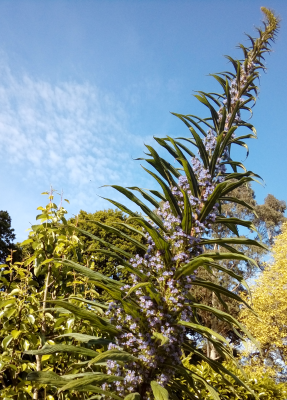
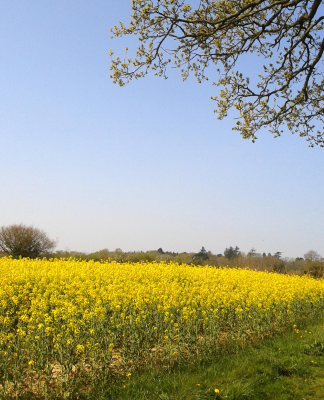
Brassicaceae – cabbage family
Example oil seed rape, Brassica napus.
Family also includes wild cabbage and charlock.
Fabaceae – bean family
Example field bean, Vicia faba.
Field beans also have extra floral nectaries on the underside of the stipules, producing copious quantities of nectar.
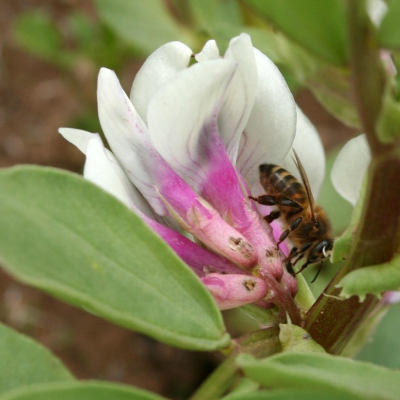
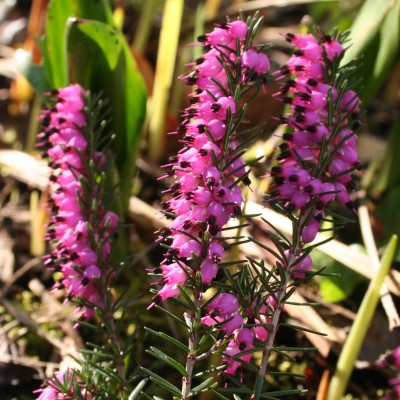
Ericaceae – heather family
Example winter heather, Erica carnea.
Family also includes Pieris, Rhododendron and Calluna
Rosaceae – rose family
Example Malus floribunda, the Japanese crab apple.
Family also includes Cotoneaster, apples, pears and roses.
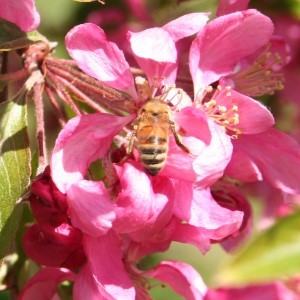
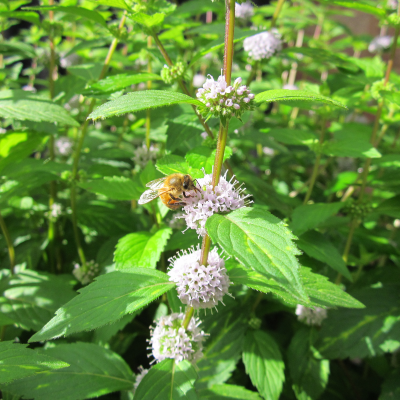
Lamiaceae – mint family
Example mint, Mentha spp.
Family also includes rosemary and Salvia.
Asteraceae – aster family
Example Michaelmas daisy, Aster spp.
Family also includes Artemisia, Senecio and Helichrysum.
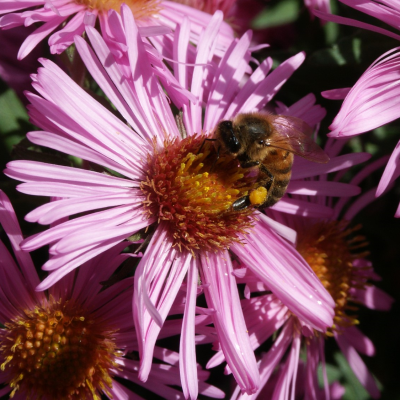
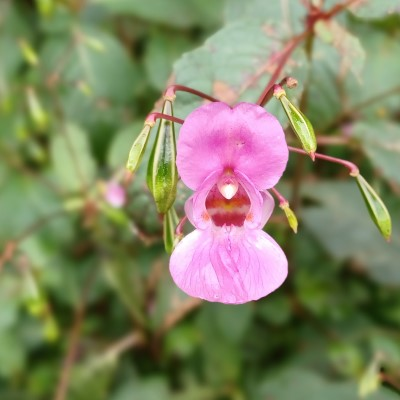
Balsaminaceae – balsam family
Example Himalayan balsam, Impatiens glandulifera.
Forage Throughout the Year
When choosing an apiary site this should be one of your major concerns. We obviously need ample forage in the warm part of the year but for bees to thrive during the cooler months, fresh pollen especially is required to build a strong and healthy population of new bees. Again, many examples can be found on the East Devon Beekeepers website ‘Plants and Bees’ page.
A 6-year study of the top 30 plants visited by bees was carried out by ‘Rosybee’ https://www.rosybee.com/research. Click the link to read about the research and results.
What Can We Do?
As beekeepers we all do our bit helping to promote the bees, but there are still lots of things we, as individuals, can do to improve the environment for bees and other pollinators. Here are a few ideas:
- Plant for all-year-round forage
- Swap grass for flowers in your garden
- Plant window boxes
- Try ‘No Mow May’ – it really works!
- Plant more bee-friendly shrubs and trees
- Try a ‘Green Roof’ on your shed (Sedum species)
- If you have room, try creating a mini wildflower meadow
Resources
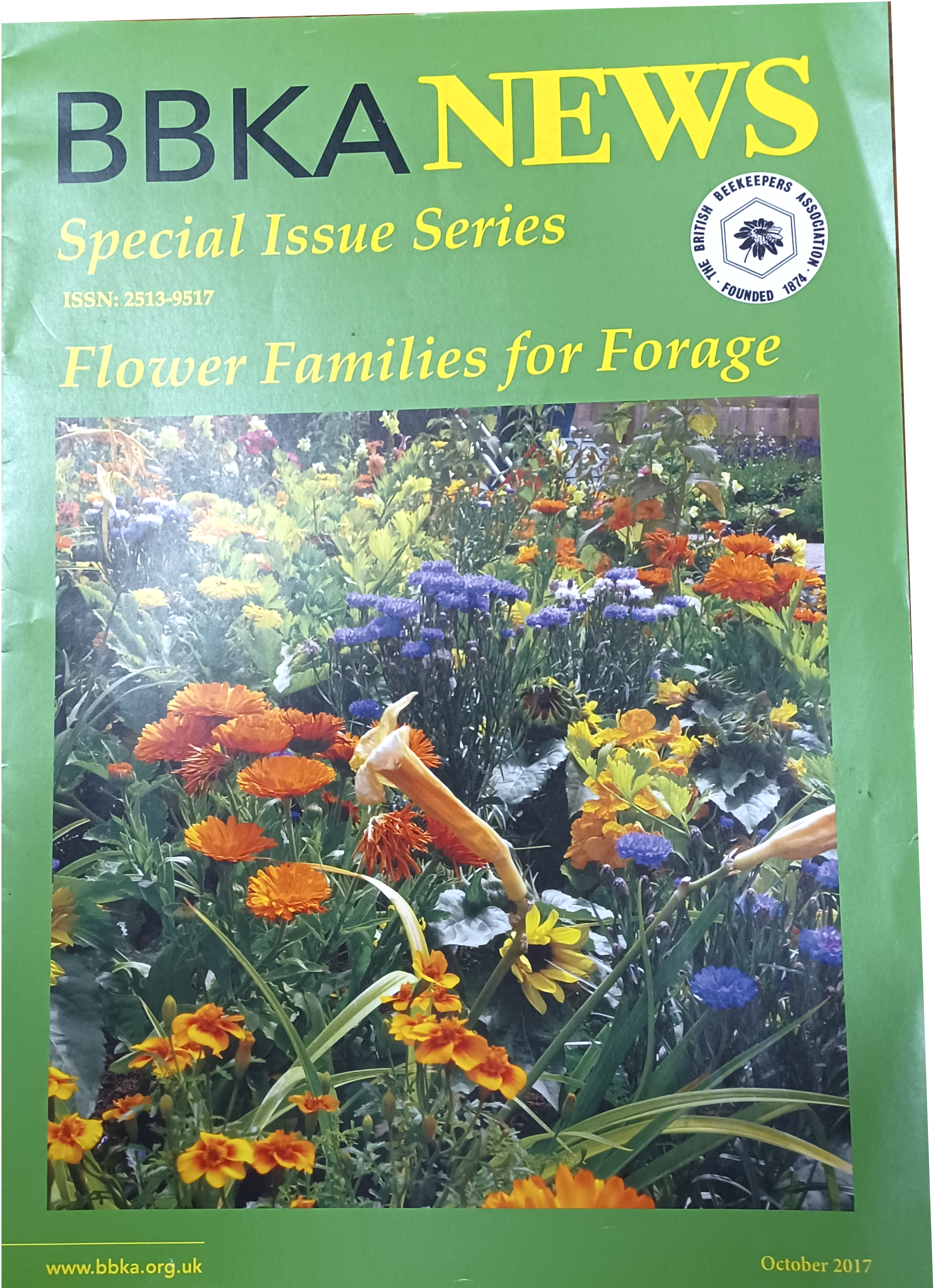
BBKA News. Special Issue Series October 2017. Flower Families for Forage.
Good Nutrition, Good Bees by David Aston and Sally Bucknall.
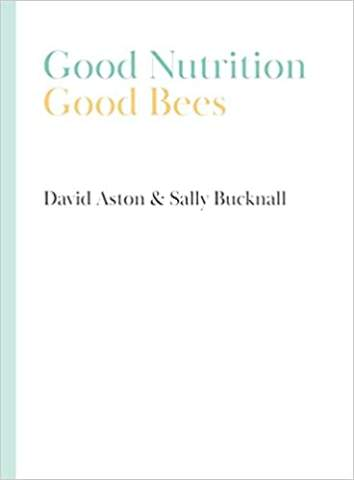
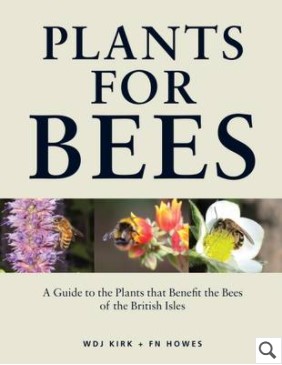
Plants for Bees by Kirk and Howes
The Bee Friendly Garden – bring bees to your flowers, orchard and vegetable patch by Ted Hooper and Mike Taylor.
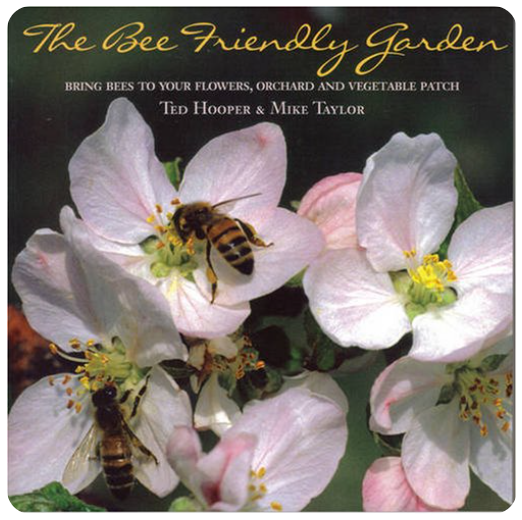
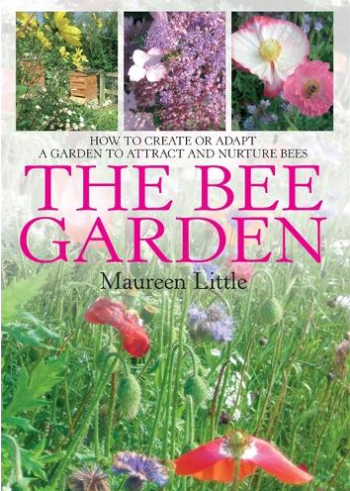
The Bee Garden – How to create or adapt a garden to attract or nurture bees by Maureen Little.
The Wild Flower Key – How to identify wild flowers trees and shrubs in Britain and Ireland by Francis Rose.
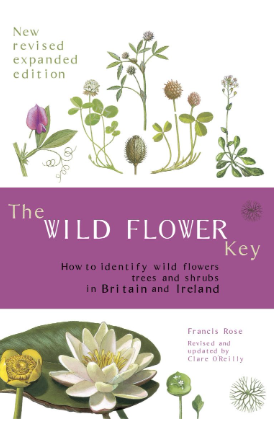
Once again, our thanks to Lynne for a well-researched and entertaining talk.
